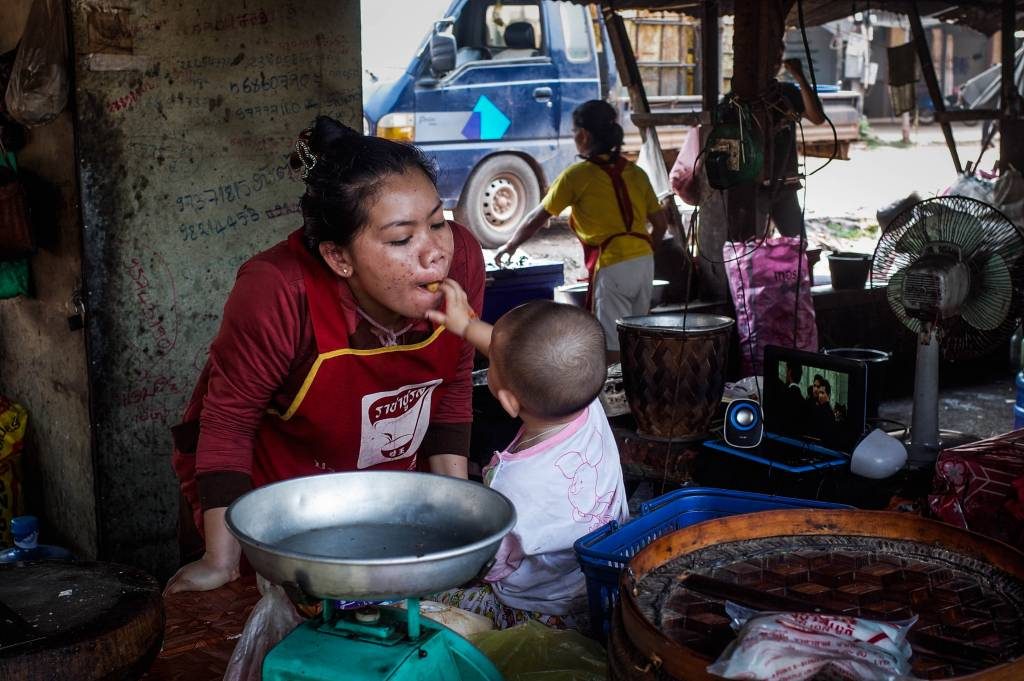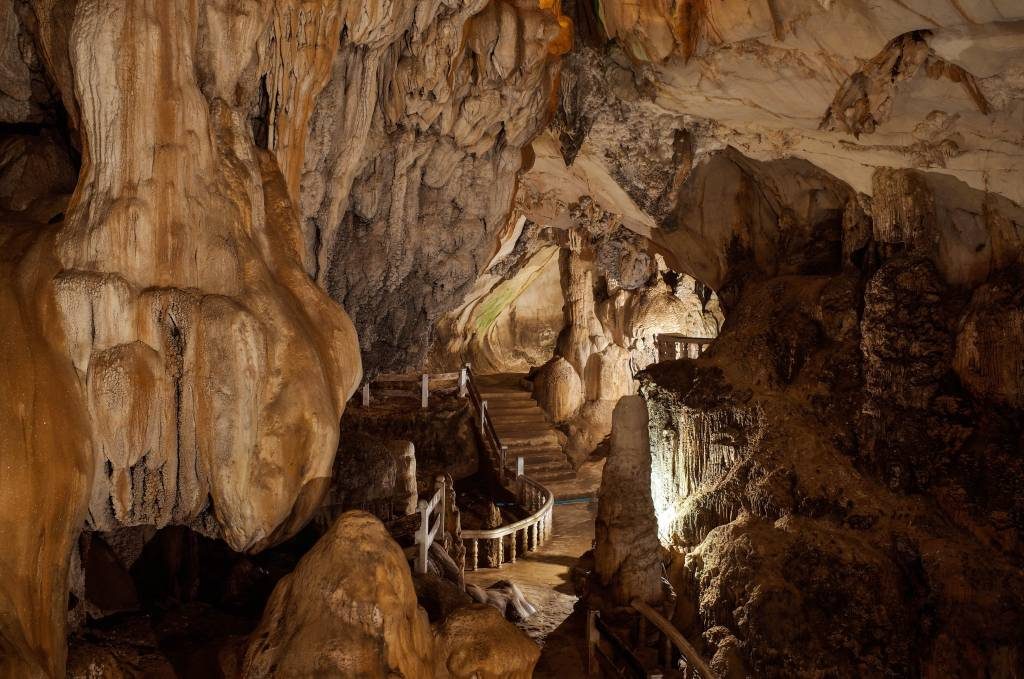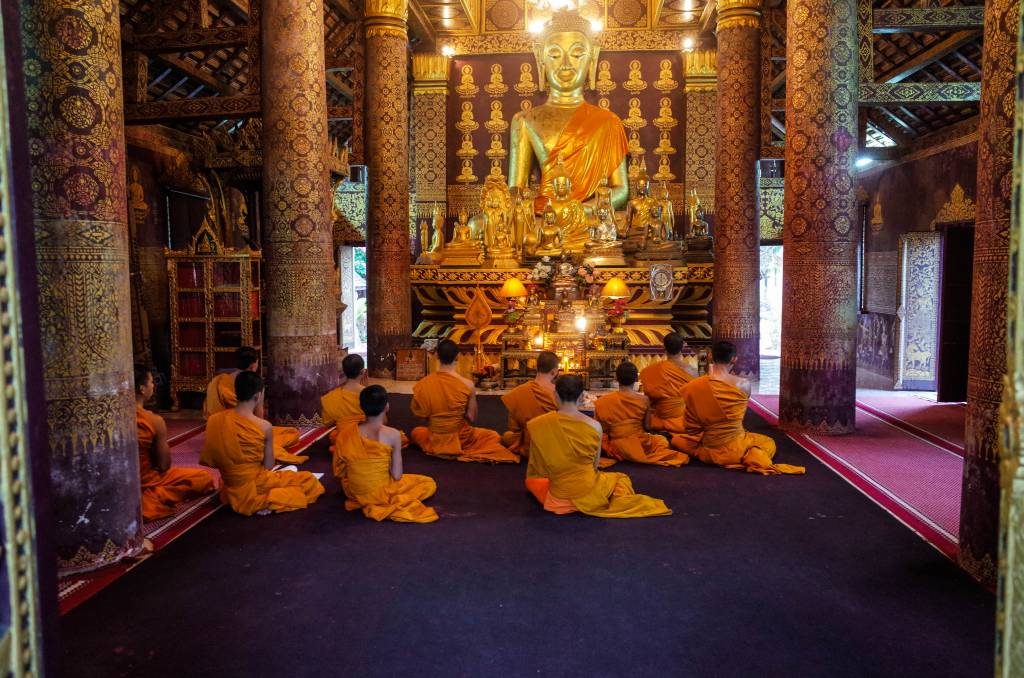Some years ago, I was urged to go to Laos by my neighbour, a Lao refugee, to visit his homeland because the Chinese were then laying their hands on the country. Looking back, he was right as some of the boat trips we did on the Mekong River are impossible to do nowadays following the building of dams on the Mekong but also on the many tributaries.
Since we were a bit short of time, we decided to visit northern and central Laos, leaving the southern part of the country for another trip that we would combine with northern Cambodia the year after. As usual, picking up photography gear was simple: My trusted Ricoh GR for me and my wife took her Fuji XQ1, with its small zoom lens, which I borrowed for a few shots when I needed a longer reach.
Laos had a troubled history in the last century. It was a French protectorate (I doubt it was very different from a colony) until the early 1960s, then it was a kingdom until 1973 when the communist Pathet Lao took power. This led to a massive diaspora of Lao people moving to France and Australia, New Zealand and the US. We have quite an important Lao community here in Le Havre although the town has only 200,000 inhabitants.
Ho Chi Minh trail
Laos can also boast the largest number of unexploded bombs from the Vietnam war as the American air force dropped more munitions on Laos than on Vietnam. This was likely because the Ho Chi Minh trail, which provided arms and ammunition to the Vietcong, ran through the country.
We went for a few hikes in the mountains and our guides constantly warned us to be careful and to walk in their footsteps for fear that we would disturb an unexploded bomb. The country contrasts dramatically with Vietnam because it has only one-tenth of the population, despite both countries being rather similar in size. Apart from a few towns, Laos is sparsely populated and features amazing nature and mountains.
We landed in Vientiane, the capital. At lunchtime, we discovered a dead quiet capital, everybody staying inside because of the searing heat, even on the banks on the Mekong. In the evening it is bustling with life with the night market, people doing their gymnastics on a large esplanade with blaring loudspeaker and a coach on a platform, and fishermen coming and going from their endeavours. Sitting on the banks of the river, you gaze across to Thailand on the opposite side. The light is pretty amazing and the water is incredibly quiet in the dry season. Boats are reflected in the water in the stillness of water and air.
There are beautiful national parks about an hour’s drive from the city centre. There you can escape the heat in the tropical forests. Leaving early in the morning, you’re bound to stumble into the famous Asian motorcycle traffic jams.

Route 13
Then, as you go north on route 13 (the only road that crosses Laos from north to south), you stumble on the market at Kilometre 53, a nice break from the potholes on the road. The market is both busy and quiet at the same time. You can buy just about everything, from shoes and clothes to soap, washing powder and of course rice, meat and vegetables. You’ll also find the inevitable tuk
It was time to leave the plains and the Lao Loum (Lao people from the plains) and drive north to the Lao Sung region (Lao people from the plateau).
Driving north along route 13, you reach Van Vieng. It is renowned for its caves and is considered as the inland Halong Bay in Laos. However, you can’t help but have mixed feelings going there. The caves and the hills and the river are pure beauty, but the place is spoilt by hordes of young Europeans, New Zealanders and Australians who go there to have fun and get drunk or stoned most of the day. They congregate in noisy bars that run along the main street.
The food, usually excellent, was not even decent and my wife and I were offered drugs while we were walking in the countryside surrounding the city. Since there had been some lethal accidents, it’s now forbidden to drink and smoke out of your mind and the place has recovered its quietness. When you manage to abstract yourself from the drunks, meeting local people diving for river weeds (they make excellent pancake-crackers with them), cruising on the river and visiting the caves was really amazing.
As you can imagine, we did not stay long in Van Vieng and headed for the Lao Theung region (Lao people from the mountains). We were happy to go back to the quietness of the countryside. En route to Luang Prabang (the former royal capital city), we stopped in small villages with friendly people who may not have seen Europeans for quite a while. Village life was relaxing after our experience in Van Vieng. Water buffaloes bathe in a greenish pond, pigs wander around the village and life goes on at snail pace.
The road then goes up and up to quite a high point before the descent to Luang Prabang. On the way, I managed to make a picture from the car of kids with a bike. Then, as you go down, you’re bound to meet young children fetching water at local wells that are situated along the road every two miles and old ladies beating branches to make brushes. The lady I photographed was really happy to have her photo taken.
Luang Prabang
We stayed for almost a week in Luang Prabang because it is a wonderful base to explore the surrounding area and there’s a lot to do in the city. The general slow pace and the sloth that grows on you after a week in Laos works wonders.
I first discovered the city thanks to a photo exhibition by Lao photographer Lam Duc Hiên. It is a Unesco Heritage Site and, walking the city, you are bound to stumble on markets. Luang Prabang market is right in the city centre and starts at about six in the morning and ends around ten. It’s an opportunity to have breakfast in the street or taste the delicious Luang Prabang pork sausages or the weed pancakes that are fished in the Mekong river. You can also buy sticky rice and wild honey and the excellent pastries they make. If you are lazy and don’t get up too early, you can always visit the night Hmong market.
Luang Prabang also boasts the royal palace and a great number of Buddhist monasteries. Everywhere you go you’ll meet old and young monks. The day starts with the Tak Bat when monks walk the streets of the city to beg their food for the day. The faith of
Around Luang
The Mekong River runs through Luang Prabang. It is nicknamed the Lao sea as the country has no direct access to the sea. It is the best way to visit the surrounding area around the city. You can either cross to the neighbouring villages on the other side of the city or go up north. It’s also a wonderful way to observe local life from the river – fishermen, barges loaded with sand, children bathing and adults tending to their gardens on either side of the river. You can hire either huge sampans or the small boats that are still built traditionally.
If you happen to visit Luang Prabang, don’t miss Joy’s restaurant on a city-centre side street. The Lap, Lao national dish (raw meat mixed with herbs and spices) is absolutely delicious as are the other dishes on the menu.


































Apart from the sheer enjoyment of looking at your photos, I am fascinated by the variety of “framing” you manage with the fixed focal length of the GR.
Thanks John,
I can’t manage zoom lenses, I don’t know why. I did possess zoom lenses but I always ended up selling them. I prefer fixed focal length or the ricoh crop mode. Much easier to manage and frame the way you want it
Jean
The colours of the country and landscape is beautiful, but again it is the portraits of the people, from the children and mothers to the market vendors that stand out. You definitely have a knack for capturing the spirit of people. I’m looking forward to more installments.
Thanks Richard.
Interesting to read about the country and lovely images Jean; I particularly liked those of the river.
Did you see any French ‘colonial’ influence in the architecture?
Kevin
Thanks Kevin,
there’s deinitely a French influence in the architecture, especially in Luang Prabang. Lots of the colonial villas have been turned into either guest houses and for the bigger buildings in luxury hotels.
Jean
Thanks Dave. The far east is full of colours and I think the ricoh does them justice
Jean
Another great article Jean, and as David points out above amazingly colourful photos. The GR certainly has done your proud. I look forward with some anticipation for episode 2.
Dave
That brought back many interesting and happy memories, Jean, and your gorgeously colourful photos have prompted me to dig around and find mine ..maybe not as brightly colourful as yours ..except for the monks’ robes!
Many thanks,
David.
Thanks David. Laos is an amzing and colourful place with really kind and quiet people.